
Workshop 1 (i.e project 1, it can be confusing, it took me a while) at the AADRL has come to an end last week. I had already given the a short description of the brief in an earlier post so I'll dedicate this to show a number of images that should portray a clear cross-section of the work that was produced in the workshop that I took part in. There were two other workshops run by different tutors that finished simultaneously, and while all workshops dealt generally with the notion of material behavior, the work produced accross the three workshops was different in many respects. This is probably due to the different way the notion of material behavior had been problematized, and how each workshop set up a different kind of problem that required different expressions.
A quick note on the one I took part in. Most of the work done was in the form of casting plaster in flexible formwork (however, one team attempted to tackle the problem in the form of pasta as aggregates which touched on interesting trajectories). Anyway, throughout the workshop one thing kept on coming back to me. Casting plaster in flexible formwork is, to a certian degree, an extremely unpredictable operation no matter how much control one gains over it. Pedagogically speaking, using the casting operation itself as a teaching tool seemed to me to be an intelligent way to allow students to let go of the monster that is pre-conception.
p.s. I'm not sure if I am trespassing on any issue of authorship in posting these images, so I wont mention any names, but the work shown here represents the work done by 25 students.
p.p.s. We had a one week collaboration with Royal College of Arts: Innovative Design Engineering students. It was an interesting week and most of the production happened in that week for many reasons such as the large space they provided us and the interaction with the other students that helped most of our projects move forward.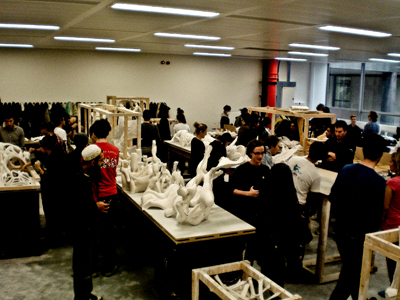
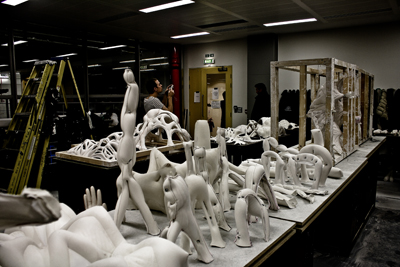
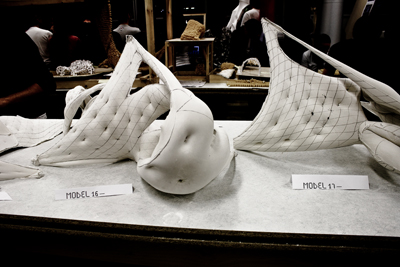
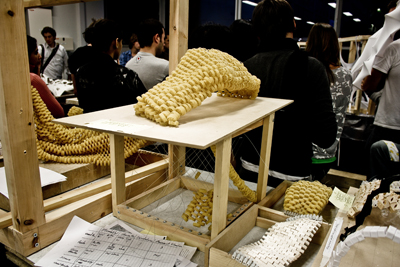
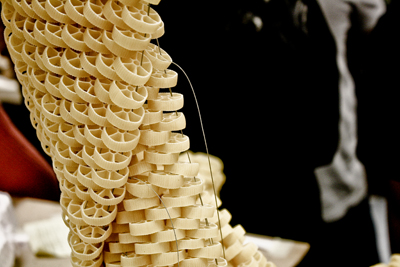


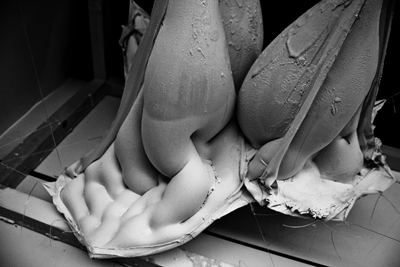



1 Comment
No, most of the times the formwork is not taken out. The grid is initially drawn on a flat sheet of lyrca. the horizontal casts are done by way of stitching 2 horizontal sheets of lyra together) while the vertical casts require different patterning. The grid is an easy way to visualize the set-out but we quickly realized that drawing a grid on a flat sheet is not the same as casting the flat sheet, that's why you realize that sometimes the grid is bypassed because the more of these models were done, the more control the teams had over the casting operation (in image 3 you can see that the grid is not taken as an absolute that we have to follow), and more control starts to mean that patterning decisions become more concious.
I'll post photos of some of the pieces before the casting operation.
Block this user
Are you sure you want to block this user and hide all related comments throughout the site?
Archinect
This is your first comment on Archinect. Your comment will be visible once approved.